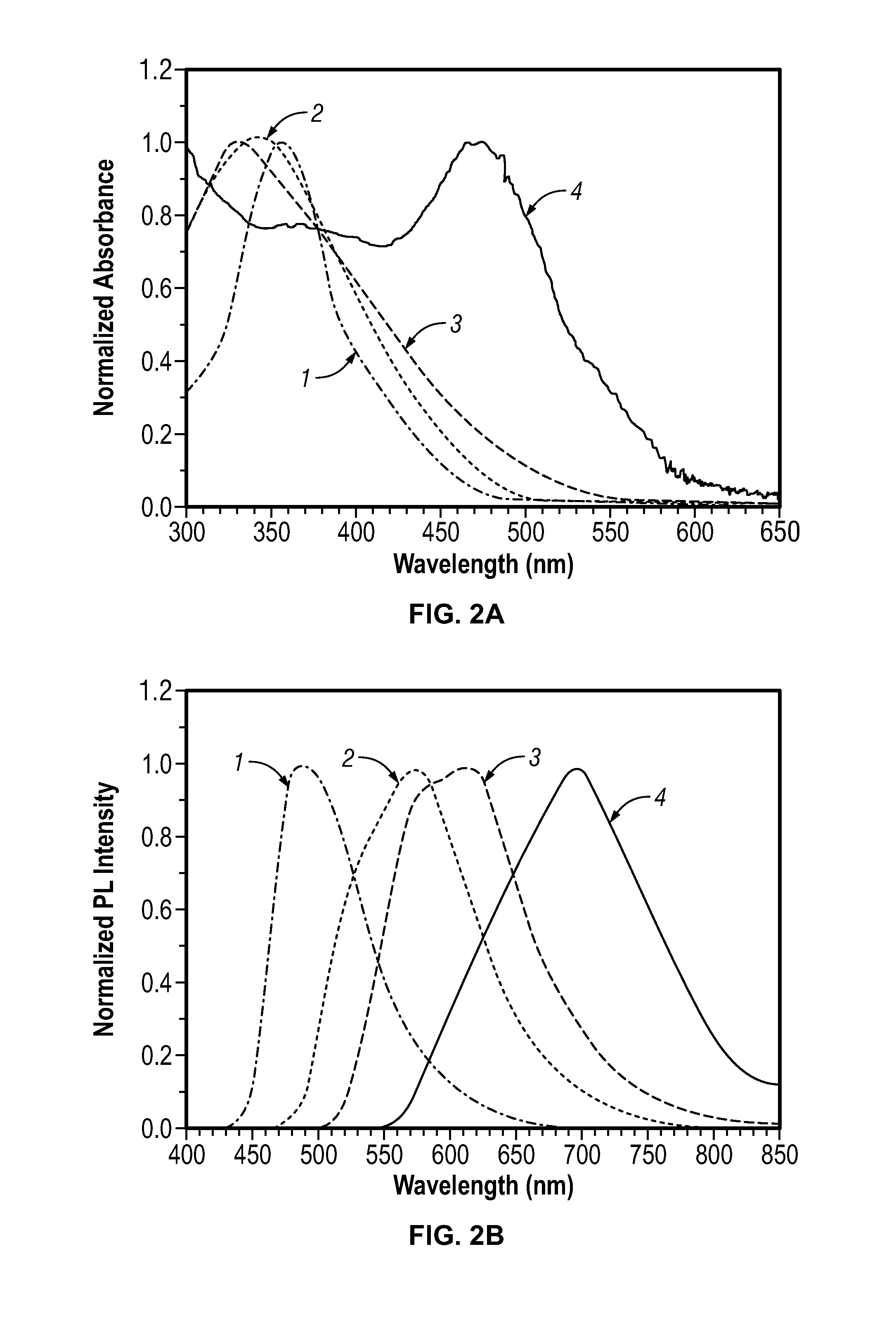Nanoparticles of light emissive polymers and preparation method thereof
a technology of light emissive polymers and nanoparticles, which is applied in the field of nanoparticles of light emissive polymers and preparation methods thereof, can solve the problems of low optical stability of organic fluorescent molecules such as coumarin, rhodamine, and the like under continuous irradiation of excitation light, and achieve the effect of improving fluorescence intensity
- Summary
- Abstract
- Description
- Claims
- Application Information
AI Technical Summary
Benefits of technology
Problems solved by technology
Method used
Image
Examples
example 1
Preparation of Light Emissive Polymer Nanoparticles
(1) Preparation of cyano-substituted poly [{2-diotiloxy-1,4-divinylene-phenylene}-alt-co-{1,4-phenylene}] (CN-DOPPV) nanoparticles
[0050]The nanoparticles of polymer (CN-DOPPV) of Formula 1, wherein Ar1 is phenyl substituted with two octyloxy groups, and Ar2 is phenyl, whose surface is stabilized with a surfactant, was prepared according to the method illustrated in FIG. 1. Its detailed preparation procedure is as follows:
[0051]25.8 mg of 2,5-bis(octyloxy)terephthalaldehyde (Adrich) and 10.3 mg of p-xylylene dicyanide (TCI) were added to 1 g of Tween® 80 (purchased from Sigma Co.), the resulting mixture was heated with hot air so as to make uniformly dissolved, and then allowed to cool down to room temperature. 5 mL of deionized water (Milli-Q, 18.2 MΩcm) was added to 0.3 g of the resulting solution to form a clear aqueous micelle dispersion solution. 0.2 mL of 1.0 M tetrabutylammonium hydroxide (TBAH) in methanol (Aldrich) was added...
example 2
Evaluation of Characteristics of Light Emissive Polymer Nanoparticles
[0054](1) Evaluation of Particle Characteristics of Light Emissive Polymer Nanoparticles
[0055]The shape and size of CN-DOPPV nanoparticles whose surface was stabilized with a surfactant, which was prepared in (1) of Example 1, were observed with transmission electron microscope (CM30, FEI / Philips, 200 kV), and the results are illustrated in FIG. 3. In addition, the particle size distribution in an aqueous dispersion phase was determined by a dynamic light scattering method (BI-9000 AT digital autocorrelator, Brookhaven), and its results are shown in FIG. 4. The CN-DOPPV nanoparticles consist of spherical particles with an average diameter of about 34 nm as shown in FIG. 3, and their average diameter in an aqueous dispersion was 59±5 nm as shown in FIG. 4.
[0056](2) Evaluation of Optical Characteristics of Light Emissive Polymer Nanoparticles
[0057]The aqueous dispersion of CN-DOPPV nanoparticles prepared in (1) of Ex...
example 3
Observation of In Vivo Fluorescence of Light Emissive Polymer Nanoparticles
[0059]Each 50 ml μL of the aqueous dispersions of CN-DOPPV, CN-PFPV, CN-PBPV and CN-PPV nanoparticles prepared in Example 1 was subcutaneously injected into experimental mice, to which 365 nm of handheld ultraviolet lamp having a radiance of 1-2 mW / cm2 was irradiated. A fluorescence photographic image observed with naked eyes is presented in FIG. 2c. FIG. 2c shows that intense fluorescence color was observed from the injected nanoparticle spots of the light emissive polymer of the present invention.
PUM
| Property | Measurement | Unit |
|---|---|---|
| Diameter | aaaaa | aaaaa |
| Diameter | aaaaa | aaaaa |
| Wavelength | aaaaa | aaaaa |
Abstract
Description
Claims
Application Information
 Login to View More
Login to View More - R&D
- Intellectual Property
- Life Sciences
- Materials
- Tech Scout
- Unparalleled Data Quality
- Higher Quality Content
- 60% Fewer Hallucinations
Browse by: Latest US Patents, China's latest patents, Technical Efficacy Thesaurus, Application Domain, Technology Topic, Popular Technical Reports.
© 2025 PatSnap. All rights reserved.Legal|Privacy policy|Modern Slavery Act Transparency Statement|Sitemap|About US| Contact US: help@patsnap.com



